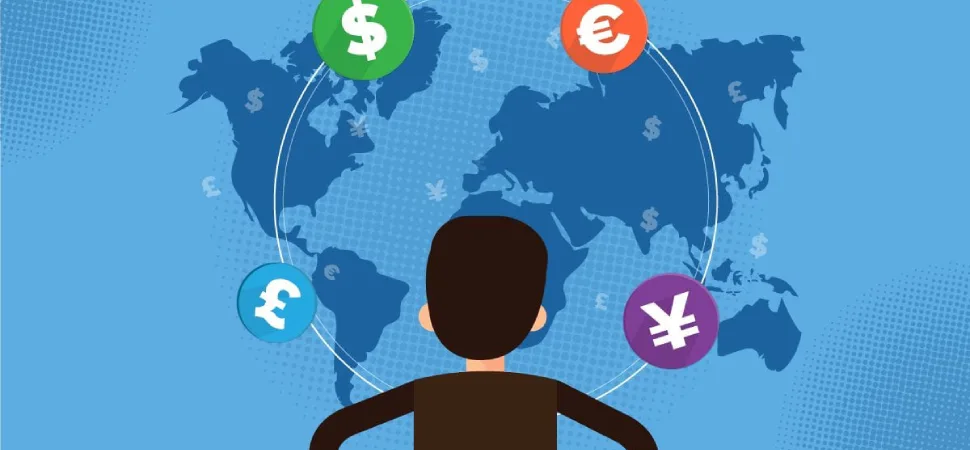17.06.2024
Евгений Лебедев
313

Over time, experienced investors have become interested in and mastered Forex trading. But as more and more people are looking for ways to maximize their income from the comfort of their own homes or in their spare time, inexperienced traders are also beginning to take an interest in Forex trading.
The process of buying and selling currencies in pairs such as EUR/USD, GBP/USD, USD/JPY, etc. is called Forex trading. The price at which you can trade the base currency (the first currency in the pair) against the quote currency (the second currency in the pair) is represented by the buy and sell prices for each currency pair. The spread, the cost charged by the broker for each trade, is the difference between the buy and sell prices.
Basis of currency movement
Currency trading is based on the movement of exchange rates, which are affected by many variables including supply and demand, interest rates, inflation, and economic, political and social events. For example, if you believe the euro will strengthen against the EU dollars, you can buy EUR/USD at a discount and sell it at a premium to make a profit. On the other hand, if you believe the euro will weaken against the EU dollars, you can make a profit. To do this, you can sell the euro at a premium and then buy it back at a lower price.
Forex trading strategies
Buy and sell trades are one of the simplest types of currency trading where price movement is represented in pips, points and divisions. Traders taking long positions predict that the price of a currency will rise and profit from it. A short position is a bet that the price of a currency pair will decrease. Traders can also use trading techniques based on technical analysis, such as moving averages and breakouts, to improve their trading methodology.
Trading techniques can be divided into four categories depending on the timeframe and number of trades:
- Scalp trading, consisting of cumulative trades that are limited to the number of pips and last for a few seconds or minutes at most.
- Short-term trading, known as day trading, consisting of holding and closing positions on the same day. Day trading can last a few minutes or hours.
- Swing traders hold positions for several days or weeks rather than one day.
- Position traders hold a currency for longer periods of time, months or years after trading.
Beginnings of Forex trading
Beginning Forex trading can seem complicated for beginners, but if you break the process down into simple steps, it will be easier to get started. Follow this guide to understand the basics and begin trading Forex.
Choose a broker
The first step is to choose an online broker that offers a trading platform. Consider factors such as regulation, trading tools, asset options, commissions, spreads, educational resources and customer support when choosing a broker that meets your requirements.
Some of the most popular Forex brokers include the following:
- Oanda;
- Com;
- IG;
- Saxo Bank;
- CMC Markets.
Learn the basics of Forex trading
Before investing real money, learn the basics of the Forex market to develop a trading strategy. Learn the following basic concepts:
- Currency Pairs. The exchange rate between two currencies, such as EUR/USD. Major and exotic currency pairs have different characteristics.
- Point size and more. A pip is the amount of money exchanged in a currency pair. The specific amount of currency is expressed in standard and minor pips.
- Bid/ask spread. A small difference between the buy and sell prices set by the broker.
- Leverage and Margin. A leverage ratio of 30:1 allows you to take more risk with a smaller deposit. Margin requirements must be met.
An understanding of fundamentals and technical analysis is also important. When evaluating trades, focus on understanding support and resistance, trends, volatility, volume, risk management, etc.
Make a trading plan
An organized trading plan will help you avoid impulsive decisions and align your trades with clear objectives. Finalize details such as:
- Market and timeframe - will you be trading major currencies on hourly or daily charts?
- Risk tolerance and trade size - what percentage of your capital will you risk in each trade? Will you use micro, mini or standard contracts?
- Entry and exit methods - will you use breakouts, corrections, or other strategies to enter and exit trades?
- Risk management rules - where will you set your stop loss, when will you cut your losses, and what is your risk/reward ratio?
Develop good habits by sticking to your trading plan. Review and update your plan as you gain experience.

Begin with a small demo account
When starting real trading, begin with small lots in a demo account to minimize risk and apply real market practices. Take time to learn every day - focus on continually improving your skills in a demo account before increasing your trade size or investing more money.
Once you are making consistent profits on a demo account, open a real trading account and begin trading with real money. There is a big psychological difference between a demo account and a real account. If your real account is small, it will reduce the volatility of the account and allow you to get used to the real financial risk.
Keep an investment diary
An investment diary allows you to keep track of all your market action, planning and personal reflections. This will help you identify mistakes so you can optimize and repeat successful patterns.
Trading can be a solitary activity, but socializing with other traders accelerates the learning process. Beginning traders can greatly benefit from mentoring, chat rooms, forums, networking events and sharing best practices. Surrounding yourself with motivated people who are facing a similar learning curve can be helpful. You can learn about strategies beyond your own. A community helps you continually improve and grow.
Continuous learning and improvement
Success in the Forex market requires constant learning. Markets evolve, currency dynamics change, and new skills are developed with experience. Learn something new every day and reinforce your knowledge with a structured weekly review.
Here are some areas to focus on as you learn:
- Technical and fundamental analysis techniques;
- New chart patterns or indicators;
- Understanding macroeconomic events;
- Understanding emotions and psychology;
- Volatility and risk management.
Build your own trading plan by expanding your knowledge. For serious Forex traders, the learning never stops.
Conclusion
You don't need a lot of money to trade Forex if you begin cautiously and practice sound money management. You can begin trading with a few hundred dollars if you start small. If you are willing to put in the initial effort, you will find a trading strategy that will work for you.
Another thing to keep in mind is that successful Forex traders put a lot of effort into their trading. The higher your level of effort, the higher your chances of success. Therefore, at the beginning of a new and challenging adventure, it is wise to educate yourself.

/ Reviews